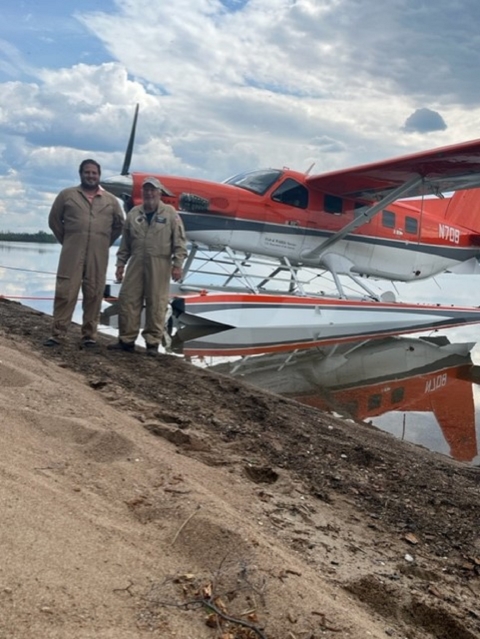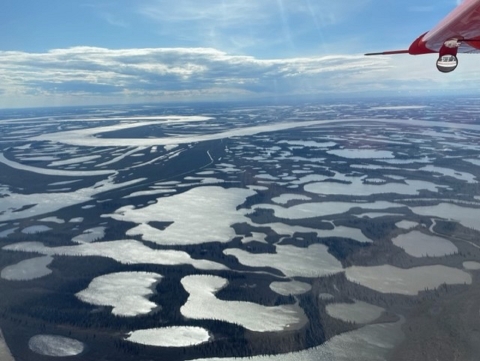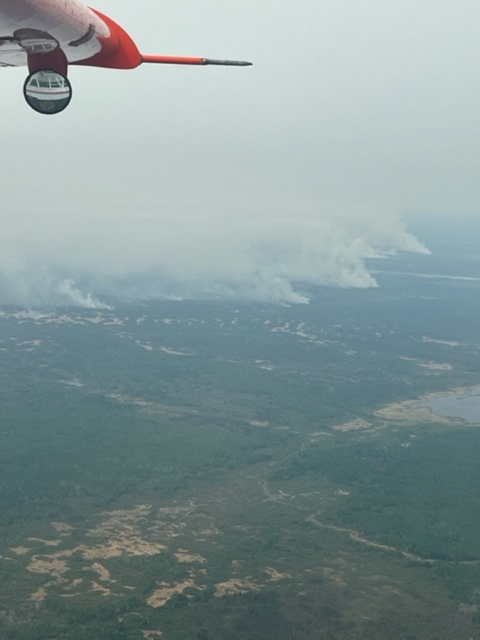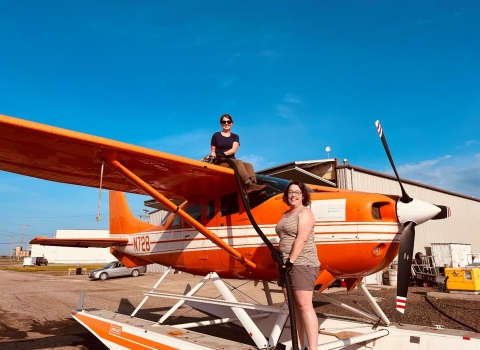Eager to embark on our waterfowl-surveying journey, retired pilot-biologist Fred Roetker, and I waited in line to check out of the hotel in northern Minnesota before heading to the airport to load our aircraft for the trip to the Great White North. That’s when we heard a TV in the background of the hotel lobby and heard the news reporter begin the morning broadcast with alarm: “New evacuation orders in Alberta! Wildfires grow as thousands are displaced.” All our attention turned to the heartbreaking footage showing residents evacuating towns located along our survey route as fires raged in the background. At that moment, we knew we were in for a month of dynamic weather conditions and logistical considerations. A heat dome was impacting much of Alberta, the Northwest Territories, and British Columbia, drying out the landscape and providing favorable conditions for fire ignition. We made it to the airport, loaded the aircraft, conducted system checks, took one more look at the weather (clear but smoky!), and we were wheels up and northbound by noon.
After clearing customs, we weaved our way around smoke and airspace reserved for firefighting operations up to northern Alberta. As we began surveying, we were surprised to find that habitat conditions were fair to good, despite the unseasonably warm temperatures following less than average snowfall in the region. As we progressed northwards into the southern region of the Northwest Territories, we observed quite poor habitat conditions. Speaking with locals of Fort Simpson and Hay River, we learned that the winter was warm and little snow fell relative to average winters. Spring also came quick thanks to the aforementioned heat dome. This led to quick evaporation of water in ephemeral wetlands and some semi-permanent wetlands were noticeably recessional or even dry. That’s not the best news for breeding waterfowl. However, as our survey continued north out of the influence of the heat dome, we began to observe good-to-excellent conditions from around Norman Wells, Northwest Territories, up to the Arctic coast between the Mackenzie River delta and Paulatuk, Northwest Territories. Wetlands in this region can remain ice-locked deep into spring but they had already thawed this year, providing abundant opportunity to nesting waterfowl.
We completed our survey on June 5th, but we were unable to immediately ferry south out of Norman Wells due to a welcomed, large frontal system that brought heavy rain to much of Alberta and the Northwest Territories. Once the weather cleared enough for us to head south, we noted the habitat conditions across much of the middle portion of the survey area had improved thanks to the ample rainfall. These recharged wetlands may provide suitable opportunities for late or re-nesting waterfowl.
While this survey season was riddled with operational complexity for Fred and me, we were humbled each day as we spoke with residents who had been displaced from their homes, some for over a month. We continue to admire the resilience, hospitality, and respect of nature that define our friends of the North. We pray for the safety of the firefighters, peace for those impacted, and continued rain to assist with fire suppression.










